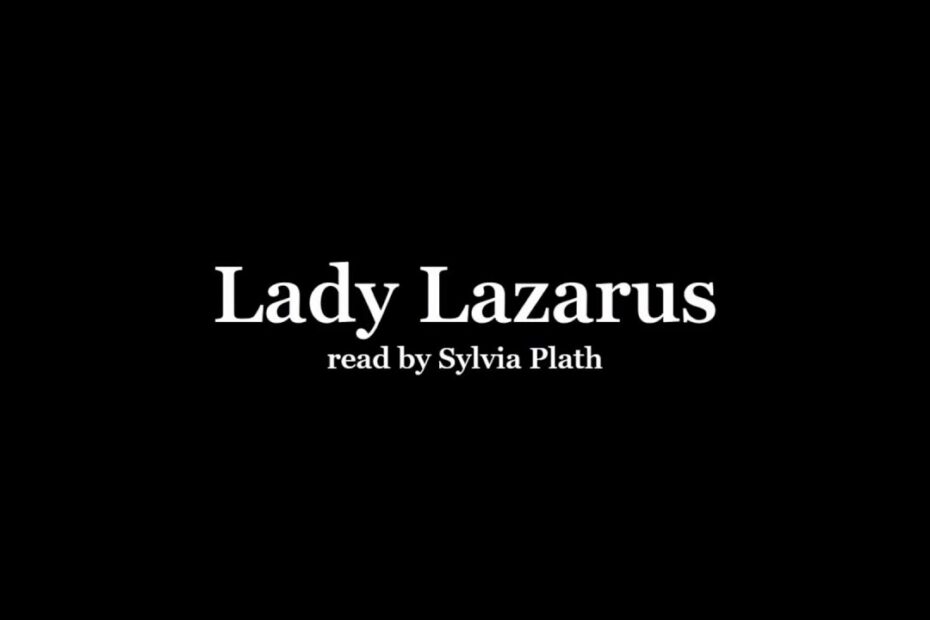Who Is Lady Lazarus? Decoding Sylvia Plath’s Controversial Ode to Death and Rebirth
Lady Lazarus: The Ultimate Comeback Queen (No, Not Beyoncé)
If Sylvia Plath’s Lady Lazarus were a person at a party, she’d be the one dramatically fake-fainting into the guacamole, only to rise moments later, shouting, “Look at my resurrection arc!” This poem isn’t your average sob story—it’s a sardonic carnival act where death and rebirth are the main attractions. The titular Lady Lazarus (no relation to the biblical Lazarus, unless you count their shared habit of not staying dead) is part phoenix, part jaded illusionist. She’s like a twisted David Copperfield, except instead of making the Statue of Liberty disappear, she’s vanishing her own trauma—and charging admission.
Holocaust Imagery or Existential Party Foul?
Plath’s use of Holocaust references (yes, Nazi lampshades and skin grafts get mentioned) is about as subtle as a flamingo in a snowstorm. Critics have side-eyed this for decades—is it a raw metaphor for personal suffering or a literary mic drop gone wrong? Lady Lazarus herself might shrug and say, “Dying is an art I do exceptionally well,” as if comparing her third suicide attempt to a avant-garde pottery class. It’s messy, provocative, and arguably the poetic equivalent of bringing a glitter cannon to a funeral. But hey, if Plath’s going to crash the solemnity of death, she’ll do it in stilettos made of metaphor.
Rebirth: The Ultimate Troll Move
What’s Lady Lazarus’s secret to bouncing back? Pure, unfiltered spite. Each resurrection is less “Hallelujah!” and more “Bet you thought you’d seen the last of me.” She’s a walking middle finger to oblivion, rising from the ashes like a mycelium network of existential angst. Plath packs the poem with grotesque carnival imagery—peeling skin, the big strip tease of the soul—to mock the voyeurism of despair. Think of it as a Macabre Ted Talk: “How to Die, Again and Again, With Flair.”
Need a tl;dr? Lady Lazarus is the patron saint of dramatic exits (and re-entrances), turning self-destruction into a public spectacle. Plath doesn’t just write about death—she stuffs it with enough dark humor, irony, and theatricality to make even the Reaper ask, “Is this a callback audition for Beetlejuice?” So next time you’re down, remember: ashes are just confetti waiting to happen.
Lady Lazarus: A Feminist Icon or Glorification of Self-Destruction? Unpacking the Poem’s Divisive Legacy
Phoenix or Fire Hazard? The Lady Lazarus Debate
Is Sylvia Plath’s Lady Lazarus a unapologetic feminist reclaiming her body from the patriarchy’s scrap heap, or a Gothic Tamagotchi that thrives on chaos? The poem, like a dramatic phoenix with a penchant for third-act plot twists, invites both interpretations. Feminists champion its subversive grit—a woman literally rising from ashes, peeling off her own skin like bargain-bin wallpaper, and sneering at the “peanut-crunching crowd” of voyeurs. It’s a middle finger wrapped in metaphor, they argue: self-destruction as performance art, weaponized to expose how society gawks at female pain. But hold the confetti.
The Elephant in the Crematorium
Critics blast the poem for glamorizing a “bewitching” dance with death. After all, Lady Lazarus treats suicide attempts like open-mic nights (“Dying / Is an art, like everything else”). Is this raw vulnerability or a how-to manual with a beatnik rhythm? Imagine your weird aunt describing her third divorce as “a comeback tour”—equal parts inspiring and concerning. The poem’s nihilistic swagger walks a tightrope between empowerment and encouragement, leaving readers to wonder:
– Is it feminist to own your trauma, even if it’s messy?
– Or does comparing suicide to a “theatrical comeback” accidentally make it… chic?
A Rorschach Test Stained with Lipstick and Ash
Plath’s work thrives in extremes, and Lady Lazarus is no exception. Scholars dissect it like a postmortem TED Talk—feminists spotlight the Lazarus metaphor as resurrection on her own terms; skeptics see a glorified “hold my beer” to self-harm. The truth? It’s a mirror. If you’ve ever ugly-cried to *Wuthering Heights* while eating cereal for dinner, you might vibe with its unhinged catharsis. If not, it’s just a theatrical ode to a dumpster fire. Either way, the poem refuses to be ignored, like a stubborn eyelash glue that survives the apocalypse.
